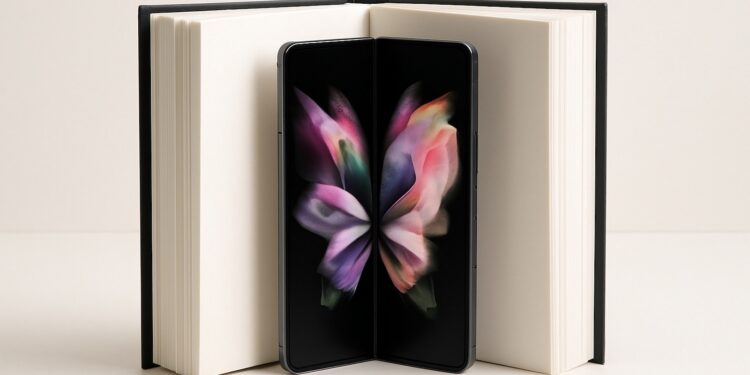The iPhone has been a benchmark for smartphones for years. With each model, Apple continues to push the boundaries of design and technology. A completely new device is slated for release in 2026: the first foldable iPhone. It will feature a fresh concept, five cameras, a Touch ID sensor, and Apple's own cellular modem. This heralds a major shift in the iPhone lineup.
Foldable devices have so far been found primarily in the Android space. Samsung, Huawei, and Oppo have demonstrated how smartphones with flexible displays can work. Apple has taken its time to bring the technology to a mature level. The first foldable iPhone is now set to take this step – in the usual high-quality design and with features that clearly distinguish it from previous models.
design and display
The device opens like a book. When closed, it resembles a regular iPhone with a 5- to 6-inch display. When opened, a significantly larger 8-inch internal display appears, offering more space for multitasking, watching videos, or playing games. This size places the foldable iPhone somewhere between a smartphone and a tablet, opening up new usage possibilities.
Camera system with five lenses
A special feature is the camera system with a total of five lenses. Each is designed for a specific situation:
- A front camera is located on the external display.
- A camera sits on the inside of the large display.
- Two cameras on the back handle the main photography, one as a high-resolution main lens, the other presumably for ultra-wide-angle or telephoto shots.
- A fifth camera is used as a selfie camera when opened.
This means the device can be used flexibly in both modes – unfolded or folded.
Touch ID instead of Face ID
While all current iPhones use Face ID, the foldable model will rely on Touch ID. The reason lies in the design. The device is expected to be approximately 9.5 millimeters thick when closed. This makes each half less than 5 millimeters thin—thinner than any previous iPhone. The complex TrueDepth system for Face ID wouldn't have room in this design. Instead, Apple is using a fingerprint sensor in the side button.
Apple's next-generation cellular modem
Inside is Apple's new C2 modem. It's the successor to the C1, first installed in the iPhone 16e. The C2 modem promises higher speeds and a stable connection. Apple also completely eliminates SIM card slots. As with the iPhone 17 Air, only eSIMs are supported.
Colors, production and price
At launch, the device will only be available in black and white. Suppliers are expected to begin production in early 2026, and sales are planned for the fall. The foldable iPhone is likely to be priced in the premium range. Since Android foldable devices typically cost more than $1,800, a similarly high price is expected from Apple.
Outlook on the iPhone roadmap
Before the foldable model, there are other new releases. The iPhone 17 series will be launched in 2025. Its front appearance is very similar to the current iPhone 16 models, but it features a new rectangular camera module on the back. The iPhone 17 Air also offers a particularly thin model. Finally, in 2027, the standard iPhone Pro is expected to receive a completely new glass design.
- Apple focuses on folding devices – a model is still pending
- JPMorgan: iPhone Fold launches in 2026 with huge market potential
Foldable iPhone: Innovation with a high price tag
With the first foldable iPhone, Apple is taking a big step. The device combines a flexible display with five cameras, Touch ID in the side sensor, and an in-house C2 cellular modem. The focus is on a sleek design and versatile use. Although the price is likely to be on the higher end, the model marks Apple's entry into a new segment. It shows how the iPhone line will evolve in the coming years. (Image: Shutterstock / Shutterstock AI Generator)
- Apple is negotiating with Google: Will Gemini AI soon come to Siri?
- iPhone 18: Apple focuses on simplifying the camera button
- Apple is planning a completely new strategy for the iPhone 18





